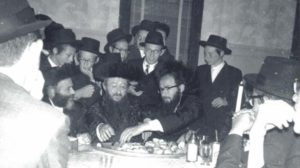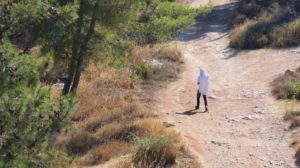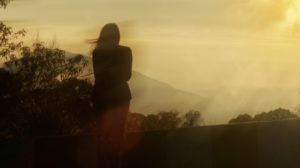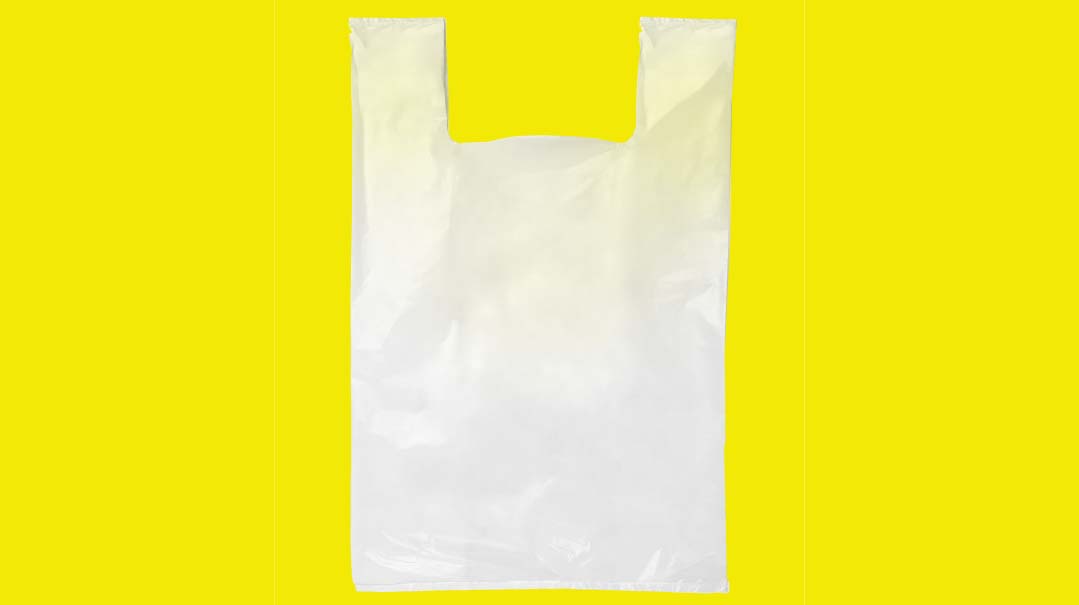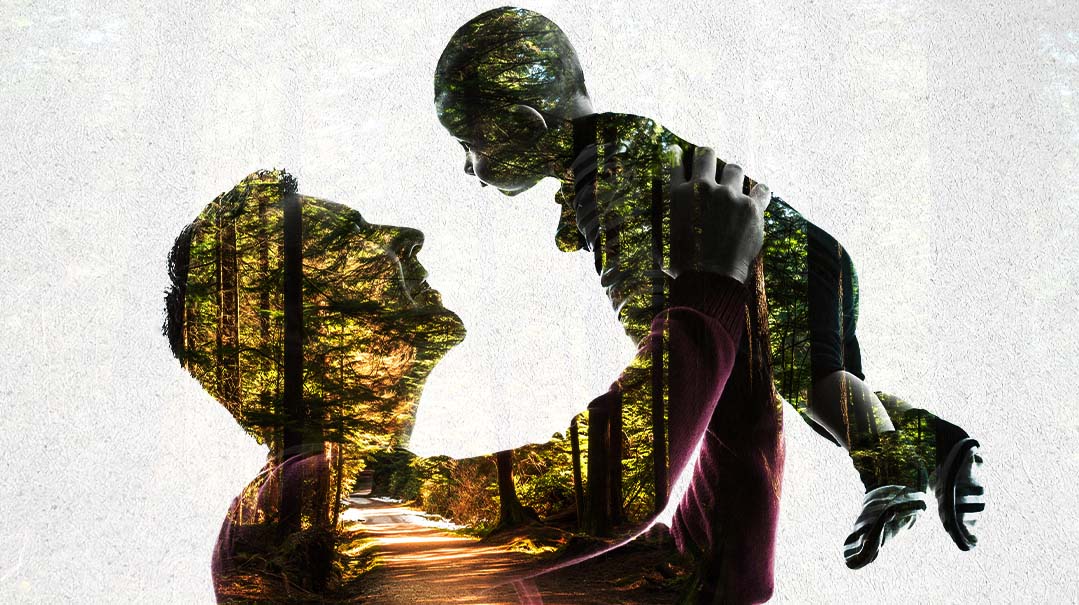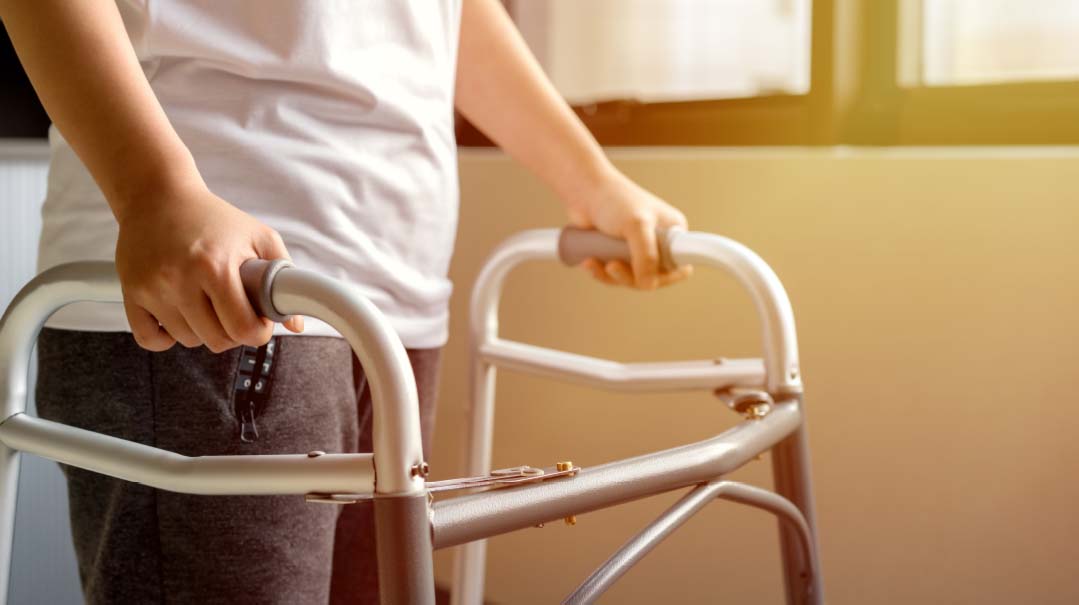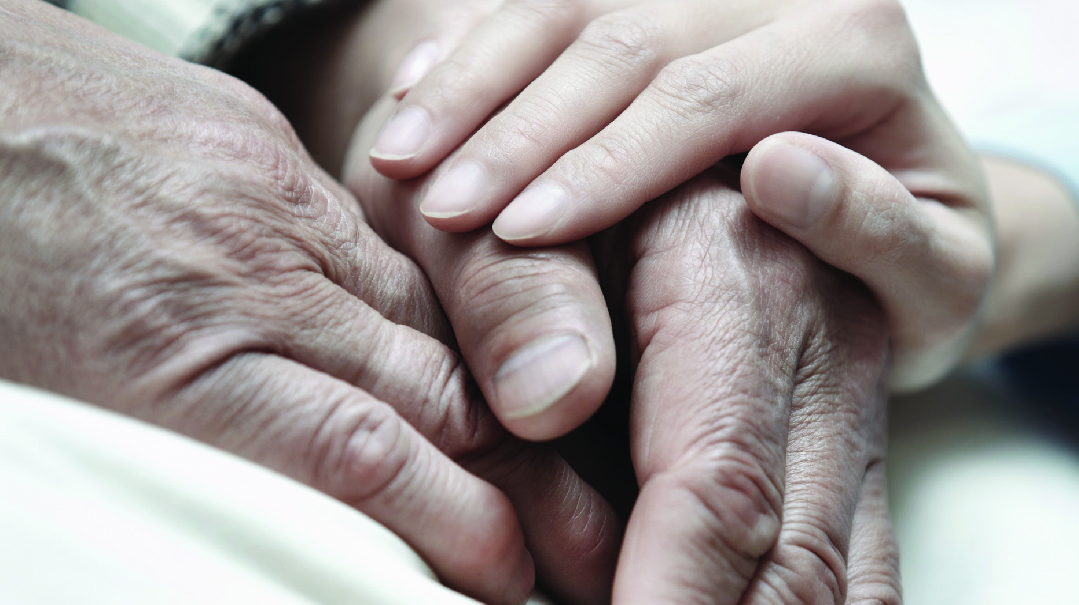Ticket to Eternity


W
hen people ask me how I became frum, I have two answers for them: I became frum through the Marcus Welby show, and through my stomach.
Dr. Marcus Welby was the star of a popular TV medical drama series that aired in the ’70s. As a medical student in Albany, New York, I watched the show regularly with my friends. One week during my second year of medical school, the episode was about a 19-year-old boy who was dying of a rare genetic disease, and decided to get bar mitvahed before he dies.
“Hey, Todd,” my friend Lenny asked me, “were you ever bar mitzvahed?”
“Nope,” I replied. I had grown up with zero connection to Judaism. The Meister family wasn’t just assimilated — we were beyond Reform.
“So you’re not even a man yet!” Lenny teased. “How can you become a doctor if you’re not a man?”
I knew that, deep down, my mother had always regretted not making me a bar mitzvah celebration. That, combined with Lenny’s teasing, spurred me to go get myself bar mitzvahed. I went to a local synagogue that Saturday and asked the rabbi for bar mitzvah lessons. “Fine,” he said. “Come back during the week.”
On my way out of the synagogue, someone asked me if I wanted to come to a Shabbos meal. I didn’t know what Shabbos was, but I did know what a meal was, so I agreed.
After that first invitation, there were plenty of others. I was in medical school in Albany for the next three years, and during that time I never missed a Shabbos or Yom Tov meal. Through Marcus Welby and my stomach, I discovered Judaism.
Sitting at people’s Shabbos tables, I began to realize that very soon there would be no Jews left in my family. Most of my relatives had intermarried, and even if some of their children were technically Jewish, in another generation or two they wouldn’t be. I have to become religious, I thought. Otherwise, there aren’t going to be any Jews left in the Meister family.
That weighty responsibility propelled me to start learning alef-beis, alongside my advanced medical studies. When I finished the alef-beis, I learned the nekudos, and started learning how to read. Then, I discovered that reading with nekudos wasn’t enough — to really read Hebrew, I had to learn to read without nekudos. When I finally learned to read without nekudos, I found out that in order to learn Torah, I had to know how to read Rashi script. So I learned that, too. But even after I knew how to read Rashi script, I’d open a volume of Mishnah or Talmud only to find that it was incomprehensible to me. I was studying to be a brain surgeon, and yet I couldn’t decipher a word of these ancient texts.
I had spent the summer after my first year of medical school doing research under the chairman of NYU’s neurosurgery department. But along with the realization that it was my job to ensure a Jewish future for my family came the realization that I would have to give up my dream of becoming a brain surgeon. To be a brain surgeon, you had to be a workaholic. If I wanted to be religious and have a family, neurosurgery wasn’t the way to go.
Midway through my medical training, I switched my specialty from neurosurgery to radiology. This was a very painful decision, because for years I had dreamed of becoming a brain surgeon. The loss of prestige added to the difficulty; on the totem pole of medical specialties, brain surgeons are way up there, and radiologists are way down there.
After my second year of medical school, I spent my summer doing research of a different kind: I joined the Sh’or Yoshuv yeshivah at their bungalow colony in the Catskills to learn Torah in an organized framework.
Like many other yeshivos, Sh’or Yoshuv starts its beginners with Gemara study. The rationale is that if you start teaching basic Chumash and Mishnah to grown men — many of whom are professionals and PhDs — they’ll get bored and be turned off from learning. So instead, they introduce fresh baalei teshuvah to Gemara, which is exciting and stimulating.
To me, however, this was extremely frustrating. The yeshivah was learning Kesubos, and I was in way over my head. It was like being thrown into an operating theater without having first learned basic anatomy and physiology.
I approached the rosh yeshivah, Rav Shlomo Freifeld, and said, “I’d like to start from the basics and work my way up to Gemara step-by-step.”
Rav Freifeld advised me to drop out of the regular program at Sh’or Yoshuv and take a more methodical approach, beginning with Chumash.
I spent my third year of medical school plodding my way through Chumash, with the help of a linear translation and a Hebrew-English dictionary. During my fourth year of medical school, I learned through Chumash again, but this time with Rashi. After that I did my medical internship, and before starting my residency I decided to go to Eretz Yisrael to learn at Ohr Somayach.
Back then, Rav Aharon Feldman taught Gemara at Ohr Somayach. I approached him and explained that I wasn’t ready for Gemara, and I wanted to focus first on the basics. Like Rav Freifeld, Rav Feldman advised me to drop out of the regular program. He explained to me that in learning, there’s a derech harabbim and a derech hayachid. Most people want to be thrown into in-depth learning, and since that’s what is going to attract them to Yiddishkeit, that’s the approach the baal teshuvah yeshivos take — the derech harabbim. The derech hayachid is to slowly build up from the basics and only then move on to the more challenging parts of Torah. If a person is patient and motivated, he can follow the derech hayachid — which, Rav Feldman told me, is the path to success in learning.
I spent three years learning full-time, first in Ohr Somayach in Eretz Yisrael and then in Ohr Somayach in Monsey. The first year, I learned the entire Shishah Sidrei Mishnah. There are about 4,200 mishnayos in total, and in order to finish all of them I had to learn about 80 mishnayos a week.
After making a siyum on Mishnayos, I figured that I could take the same approach to learning the rest of Torah. If I learned one daf of Gemara a day, I’d finish Talmud Bavli in about seven years. I looked at the Talmud Yerushalmi, with its 1,554 dapim, and figured I could finish that in four years, at a pace of a daf a day. Then, I’d make my way systematically through Tanach, Midrash, and the Rambam’s Mishnah Torah, which would take me about six years. After that, I’d tie everything together by learning Tur, Beis Yosef, Shulchan Aruch, and Be’er Heitev in about three years, by learning one and a half of the 1,704 chapters per day.
In total, this learning program would take me 20 years, and would require me to learn an average of 2–3 hours a day. Built into my program was a yearly review of the entire Mishnah, which served as a form of chazarah of Shas.
My learning program was inspired by a story I read about the Chofetz Chaim. When Rav Meir Shapiro introduced the Daf Yomi concept, the Chofetz Chaim was very excited. He explained to his talmidim that the Midrash Tanchuma teaches that whichever parts of Torah you learn in This World, you’ll also be able to learn in the Next World. Now that all of Klal Yisrael would be learning Daf Yomi, the Chofetz Chaim said, all of the classrooms in the World to Come will be full, because everyone will have learned all of Shas — including neglected masechtos, such as Nazir — and will have the tickets to the corresponding classrooms in Shamayim.
I was still in my 20s when I developed the program, and 20 years seemed like an awfully long time back then. But I told myself that I didn’t need to be a learned man by age 30 — my goal was to die a learned man. More significantly, my goal was to be able to attend every single shiur in Heaven. When I reached a sugya that I had trouble with — such as the fifth perek of Bava Metzia, which discusses the complex laws of ribbis — I consoled myself with the knowledge that in the Next World I’d be able to learn this sugya from HaKadosh Baruch Hu Himself.
My learning program didn’t offer the thrill and exhilaration of lomdus, but it did provide the satisfaction of completing masechta after masechta and making siyumim on a regular basis. One day, I promised myself, I’ll be able to learn lomdus — after I finish all of Torah once and am guaranteed entry into every classroom in Heaven.
With my learning program firmly under way, I started my residency as a radiologist. I also got married and had eight children.
By the time I started building a family, my perspective on Yiddishkeit had shifted considerably. Initially, I was attracted to Judaism for social (and culinary) reasons — I liked Shabbos food, and the ambience of the Shabbos table. Later, when I decided to become a baal teshuvah, my reasons were primarily anthropological: I wanted my grandchildren to be Jewish, and I knew that I had to become observant in order for that to happen. But as time went on, and I learned more, I realized that the cultural aspects of Judaism weren’t enough to guarantee that there would be Jewish Meisters down the line. The basis of Judaism, and the only possible foundation for a Jewish future, was Torah.
I sacrificed much in the way of income and prestige by becoming a radiologist instead of a neurosurgeon. But the field of radiology granted me something that practically no other field of medicine could supply: the ability to work part-time. With the exception of six years of full-time work at the beginning of my medical career, I maintained a relatively light work schedule so that I could devote a good portion of my time to my learning and my family.
I spent lots of time with the family, and I never considered that a waste of time, even though I could have earned a lot more money if I had worked longer hours. I wanted to raise frum children who thought that being frum was wonderful and lovely, and I knew that the only way to do that was by spending time with them.
I wasn’t a huge masmid, either. If I made headway in my learning, it was because I was persistent, not because I was unusually diligent. Like compound interest, the returns of my Torah study accumulated over time, in the form of an ever-greater base of Torah knowledge.
Still, at times it was challenging to find the time — and the desire — to learn. My medical training schedule sometimes involved 48- or 72-hour shifts, which made it difficult or impossible to squeeze Torah study into my day. And I had to miss many simchahs and events in order to stick to my learning schedule. Even when I was able to find the time to learn, I didn’t always have the cheishek to put in the requisite hours. I wasn’t a machine, and there were plenty of days when I slacked off. But having a plan and a framework spurred me to make up for lost time.
It took me just about 20 years to finish the original learning program I had mapped out for myself. I was in my mid-40s when I made my big siyum, having completed Talmud Bavli, Talmud Yerushalmi, Mishnayos (about 15 times), Tosefta, Masechtos Ketanos, Mechilta, Sifra, Sifri, Tanach, Midrash Rabbah, Tanchuma, Mishnah Torah, Tur with Beis Yosef, and Shulchan Aruch with Be’er Heitev. Finally, I had the peace of mind of knowing that the door to every classroom in Olam Haba would be open to me. Now, I could enjoy the luxury of sitting down to learn something b’iyun.
I studied Yoreh Dei’ah for several years and received semichah. After that, I had the pleasure of learning with my sons various sugyos in Makkos, Bava Kama, Bava Metzia, and Bava Basra, with Tosafos. What nachas! Right now, I am trying to learn all of Maseches Chullin with Tosafos — the first time I have ever attempted to learn an entire masechta this way. I am also working my way laboriously through a very deep and complicated peirush on Chullin, the Rimon Peretz, by Rav Peretz Tuvia Stein Hy”d, who was killed by the Nazis. This is a special undertaking for me, because the peirush was written by the brother of Albany’s Chazzan Shalom Stein, who hosted me for weekly Shabbos meals and introduced me to Torah study.
In 1997, I published a book called The Meister Plan (ArtScroll/Mesorah), detailing my 20-year plan for finishing kol haTorah kulah. My plan might have sounded like a derech hayachid, but there are countless statements throughout Shas that make it clear that learning all of Torah isn’t exactly optional.
To this day, I get inquiries from people who are interested in following the plan. So there are definitely yechidim out there who want to learn kol haTorah kulah. And I suspect that deep down, every Jew really wants to.
Four and a half years ago, at the age of 54, I was diagnosed with a rare, aggressive form of cancer, already in stage 4. “The average survival rate is three years,” the doctors told me. “About 30 percent of patients make it to five years.” Had I not learned through all of Torah by that point, I would have been terrified.
When the cancer spread to my spine, I had to see a neurosurgeon. Sitting in his office, I felt a twinge of heartache — here I was, a sick radiologist who had never realized his dream of becoming a brain surgeon. That heartache lasted only a moment, though. I had no regrets about the choices I had made in my life. Besides, I knew very well that the prestige of being a neurosurgeon is superficial and fragile. The chairman of NYU’s neurosurgery department, under whom I had done research, had seen his career — and his marriage — end in scandal. Where there is no Torah, there is no true greatness.
I’ve been receiving chemotherapy and radiation treatments on and off ever since my diagnosis. As a result of the chemo, my vision deteriorated, which effectively ended my 26-year career as a radiologist, since I can’t look at X-rays anymore. Learning Torah has also become more difficult, because I am tired and weak and have difficulty concentrating for long periods.
I don’t know how much longer I have to live. Who does? Yet it’s a tremendous comfort to me to know that whenever my time comes, I will have the tickets to every shiur in Yeshivah shel Maalah.
Until then, I have the great pleasure of being able to dive into the Yam HaTalmud. Just looking at my bookshelf full of tall maroon volumes of Gemara with their yellowing pages is a thrill to me, to this day. My medical textbooks have to be replaced regularly, because every few years they’re out of date; there’s no eternal wisdom in there. But the Gemara has never gone out of date — it will remain on the shelf, and in my mind, until 120 — and beyond.
(Originally featured in Mishpacha Issue 550)
To have your story retold by C.Saphir, e-mail a brief synopsis to lifelines@mishpacha.com or call +1.718.686.9339 extension 87204 and leave a message. Details will be changed to assure confidentiality.
Oops! We could not locate your form.


